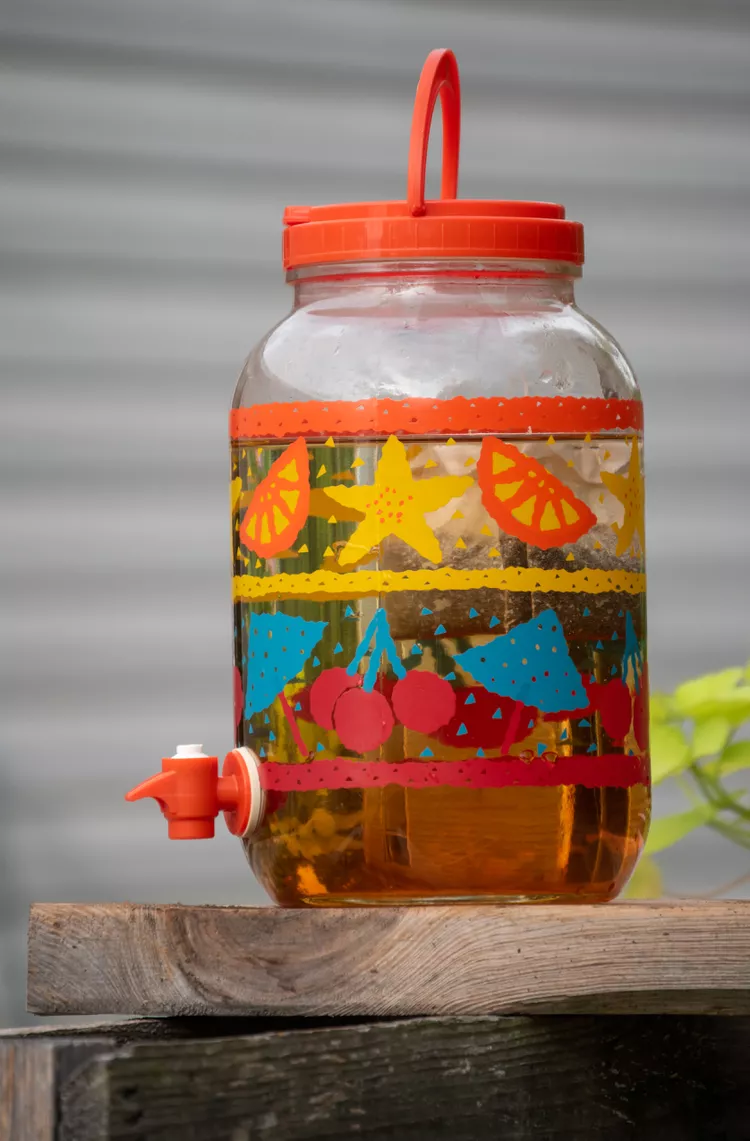What You Need to Know About Sun Tea Safety

A quick search on Instagram for #suntea will turn up more than 43,000 posts, many of them coming within the last few months. It's clear summer months are prime time for this classic tea beverage. With so many of us still spending more time than usual in our homes, now is the time to try out all kinds of new recipes and hobbies—so you may be looking into making sun tea, too. But what is sun tea, exactly, and why are some health experts saying it may be dangerous? Here's the need to know info so you can sip safely.
- Donald Schaffner, Ph.D., a professor of food microbiology at Rutgers University in New Brunswick, New Jersey
What Is Sun Tea?
Unlike your classic hot tea that's brewed for a few short minutes in boiling (or near boiling) water or iced tea that brews briefly then is enjoyed over ice, sun tea is made by brewing tea in a clear container set in the sun for several hours. Caffeinated black tea is most often used as the base.
Is Sun Tea Safe?
A batch of sun tea generally sits outside your door for several hours as the outdoor temperature slowly rises and falls. Unless you live in a region with really extreme summer weather, that means your tea is sitting at a temperature in the 40°F to 140°F "danger zone." This puts the sun tea at risk to potentially foster bacterial growth.
"Since teas are minimally processed agricultural products, they can often contain microorganisms. We have known for some time that microorganisms can grow in even unsweetened tea," explains Donald Schaffner, Ph.D., a professor of food microbiology at Rutgers University in New Brunswick, New Jersey.
Hints first arose in 1996 when the the Virginia Department of Health released a "Memo on Bacterial Contamination of Iced Tea" which noted that tea leaves may be contaminated with coliform bacteria. That's not the kind of bacteria we want in our diet. Then 1997 Journal of Food Protection research added to the evidence against drinking tea that hasn't been heated to a high enough temperature to kill any potential microorganisms.
"Part of what made this news so sensational was the discovery that sometimes these organisms are 'fecal coliforms.' Historically, microbiologists have viewed fecal coliforms as an indication of fecal contamination, but as the 1997 research points out, 'It is well known that several genera of bacteria normally found on plant materials are positive in fecal coliform tests. Among them are Klebsiella and Enterobacter species,'" Schaffner says.
While there's surprisingly little scientific research about sun tea, a 1996 patent refers to different levels of microorganism growth in tea at different temperatures. The lowest temperature they studied was 100°F (likely warmer than the outdoor air where you live even if it feels like 150°F, and that was the lowest they went). When the scientists deliberately added Klebsiella pneumonia bacteria to the tea, the organism reached high levels within 24 hours of starting the tea brewing process. That's longer than most people leave their sun tea brewing, but worrying enough to make you rethink your brewing method.
The Bottom Line on Sun Tea
If you're set on making sun tea, "let your tea steep in the sun for no more than four hours if you're going to consume it immediately. If you want to save it for later I would suggest steeping for three hours and then refrigerate," Schaffner says.
When it comes to controlling microorganisms in any food or drink, it's all about time and temperature, according to Schaffner. (You can learn more about this in our guide for summer food safety.) Since it doesn't reach a temperature high enough to kill potential bacterial contamination and hangs out in the danger zone for some time, sun tea comes with a bit of risk (like many things in life). But you should be safe to use a steeping time of four hours or less, Schaffner says. Remember that a good rule of thumb with any leftovers—including sun tea stored in the refrigerator—would be to consume within three days max.
Ideally, your best safety bet is to stick to cold brew tea, regular iced tea, or hot tea. "I make my tea with boiling water, and for the highest degree of safety, I suggest that others do the same," Schaffner adds.